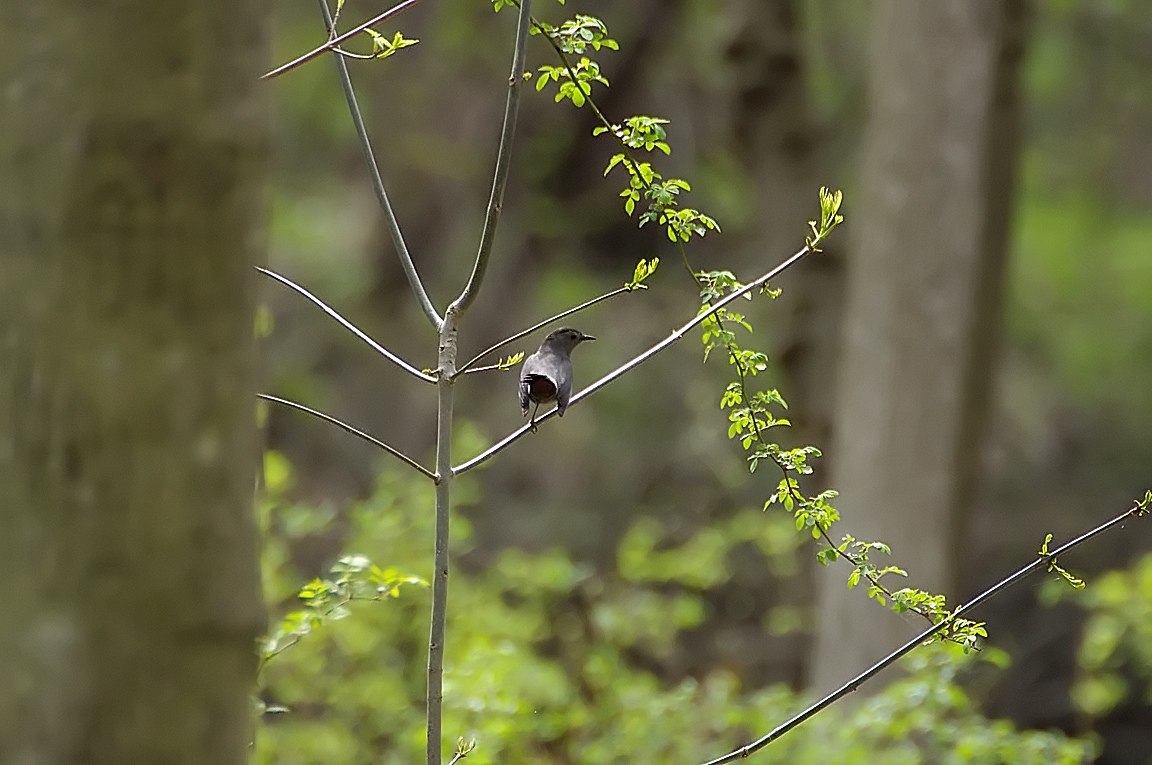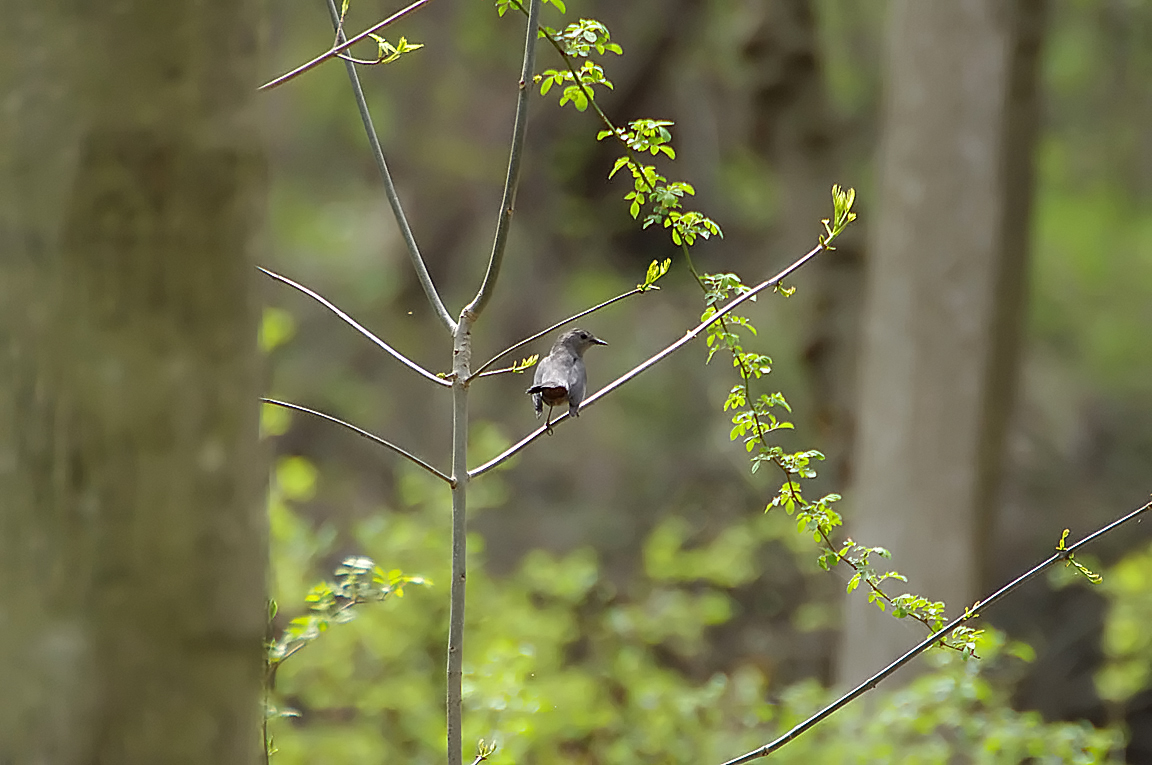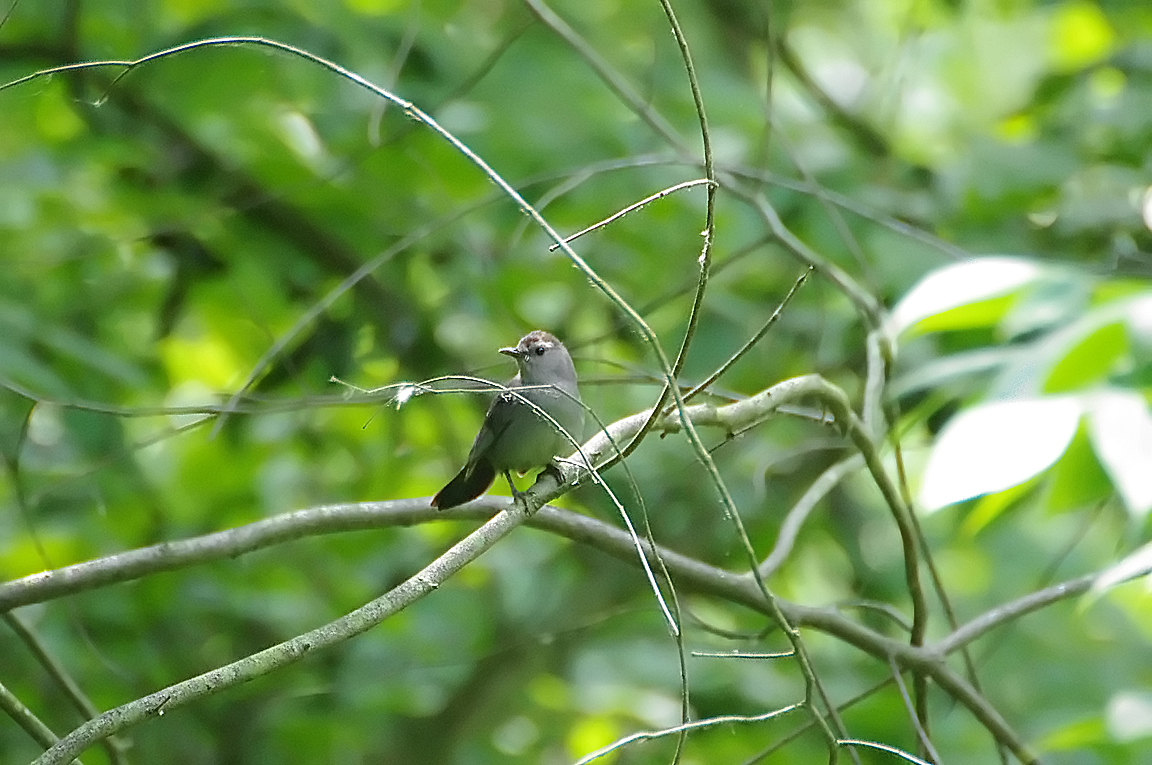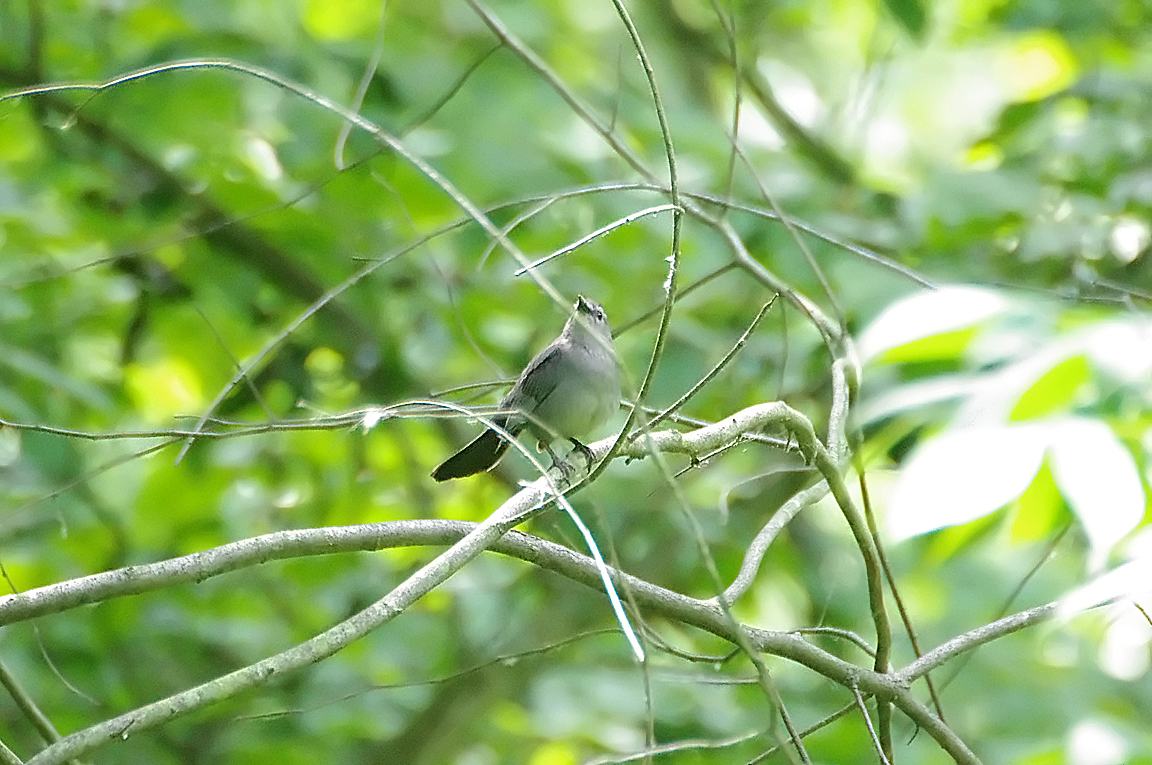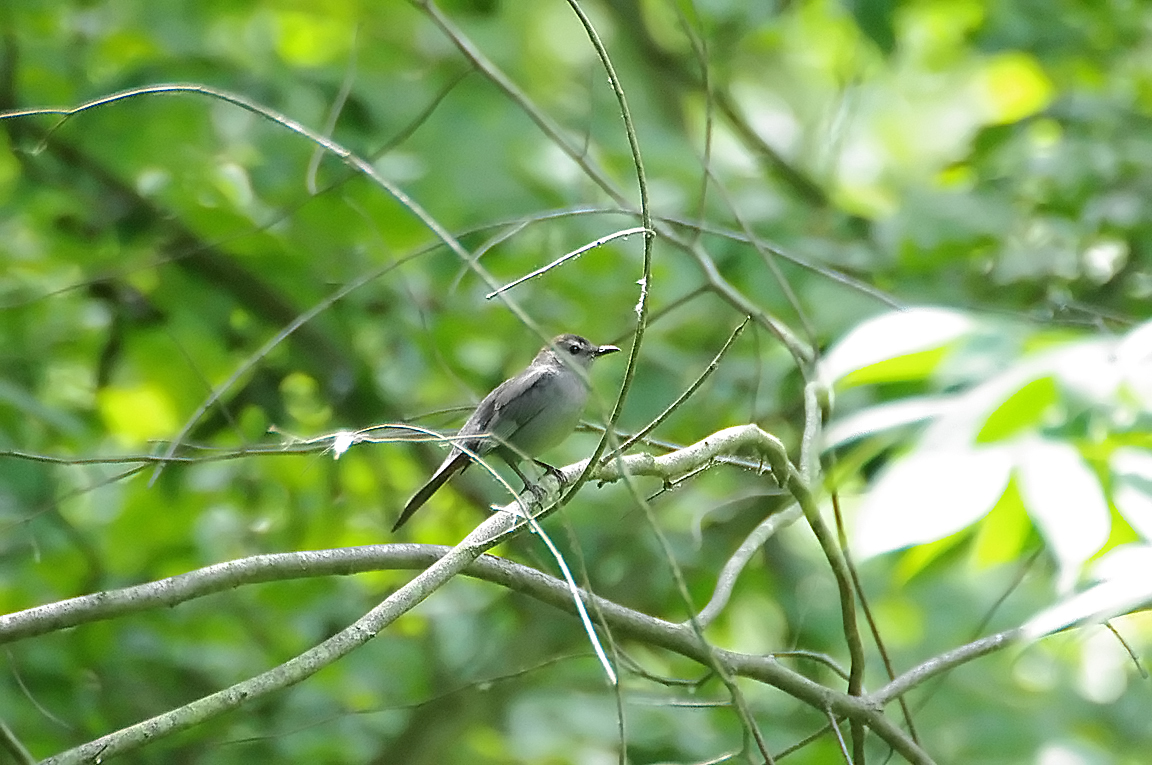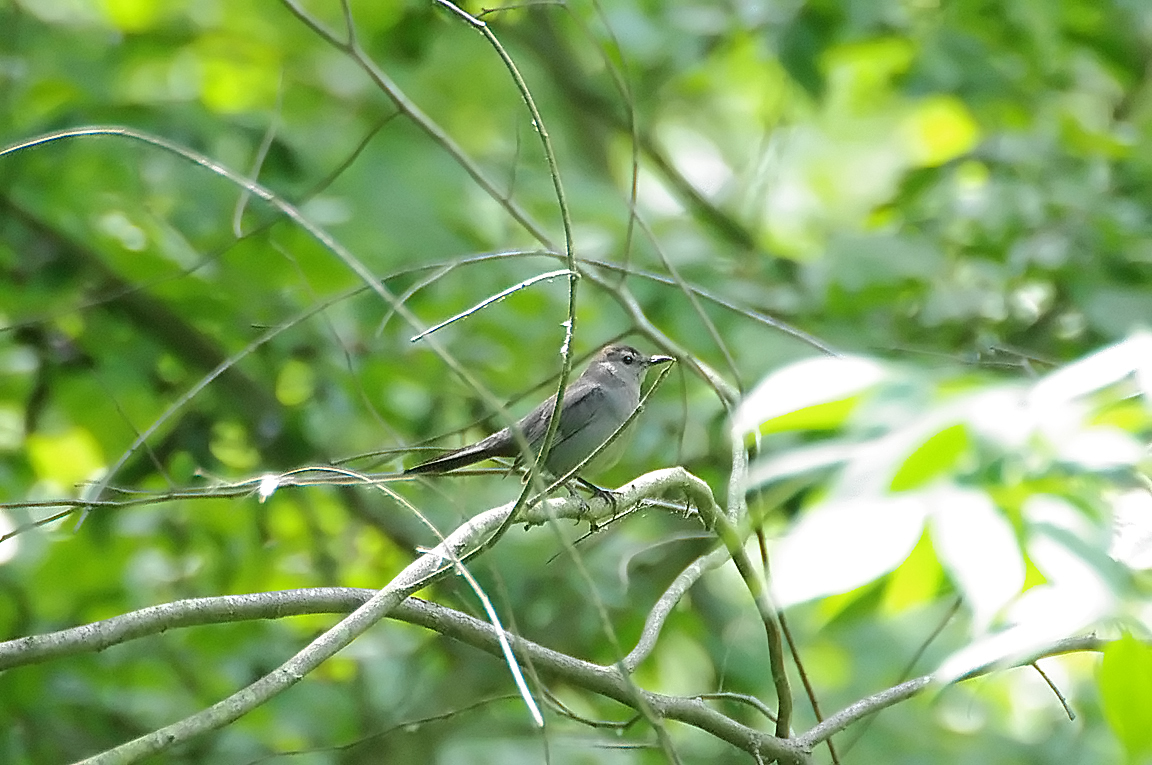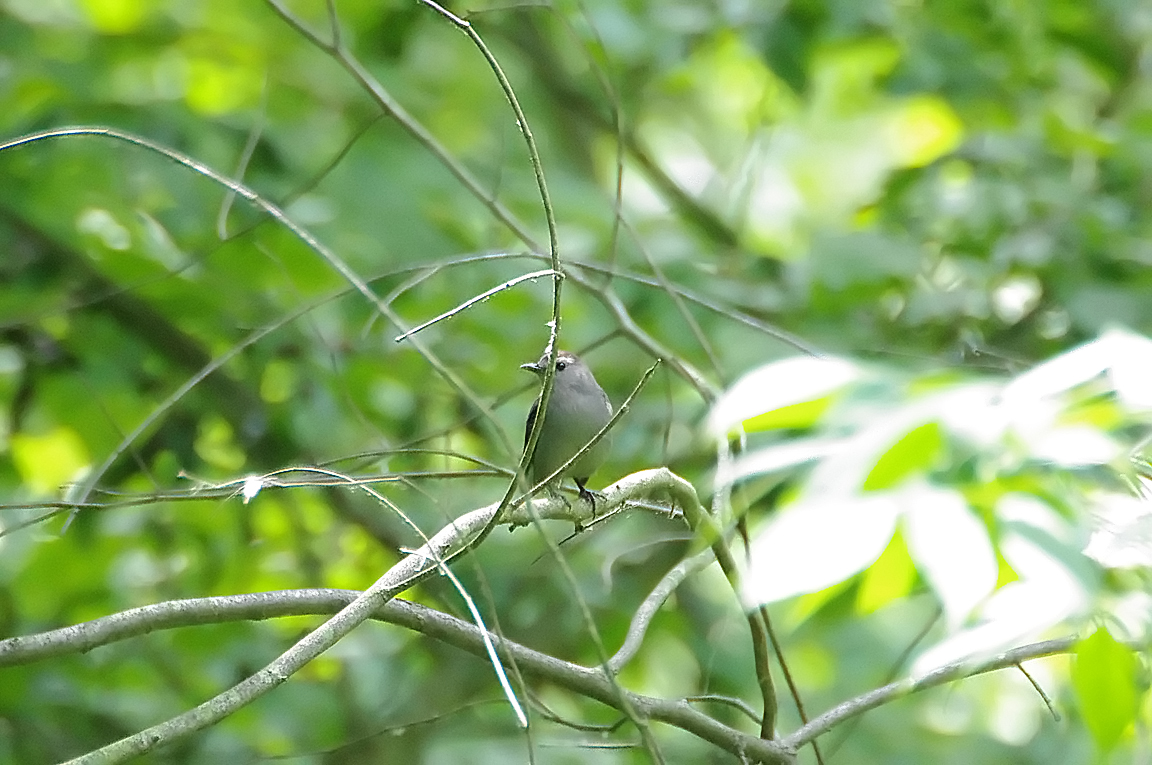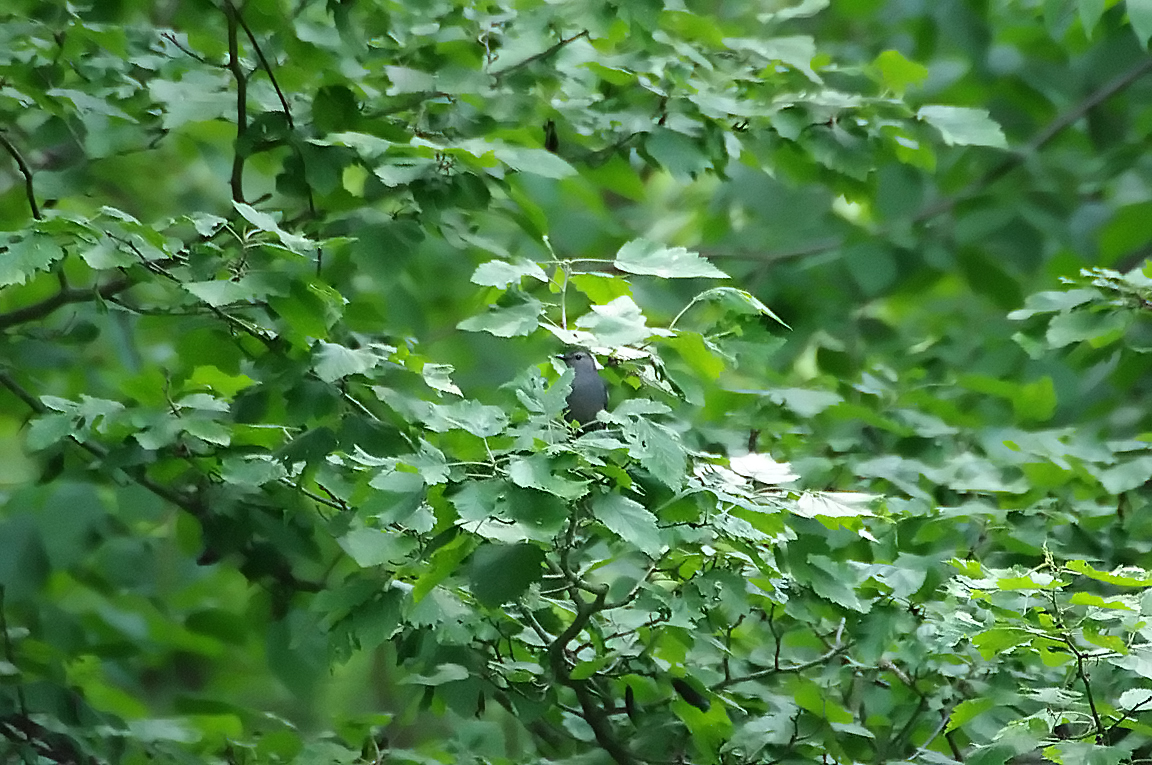|
|
|
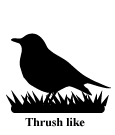 |
Gray Catbird
|
| Dumetella carolinensis | |
If you're convinced you'll never be able to learn bird calls, start with the Gray Catbird. Once you've heard its catty mew you won't forget it. Follow the sound into thickets and vine tangles and you'll be rewarded by a somber gray bird with a black cap and bright rusty feathers under the tail. Gray Catbirds are relatives of mockingbirds and thrashers, and they share that group's vocal abilities, copying the sounds of other species and stringing them together to make their own song.
Interesting Information
-
The Gray Catbird's long song may last for up to 10 minutes.
-
The male Gray Catbird uses his loud song to proclaim his territory. He uses a softer version of the song when near the nest or when a bird intrudes on his territory. The female may sing the quiet song back to the male.
-
The Gray Catbird belongs to the genus Dumetella, which means "small thicket." And that's exactly where you should go look for this little skulker.
-
The oldest known Gray Catbird lived to be 17 years 11 months old.
-
A group of catbirds are collectively known as a "mewing" and a "seat" of catbirds.
-
Gray Catbirds are able to recognize their own eggs making them less susceptible to brood parasites such as the Brown-headed Cowbird.
-
Their calls include the catlike meow call that gives them their name.
-
When feeding on the ground, they toss leaves aside with their bills rather than scratching with their feet.
Description
Adult Description
Size & Shape
A medium-sized, slender songbird with a long, rounded, black tail and a narrow, straight bill. Catbirds are fairly long legged and have broad, rounded wings.
Color Pattern
Catbirds give the impression of being entirely slaty gray. With a closer look you'll see a small black cap, blackish tail, and a rich rufous-brown patch under the tail.
Sex Differences
Sexes Similar
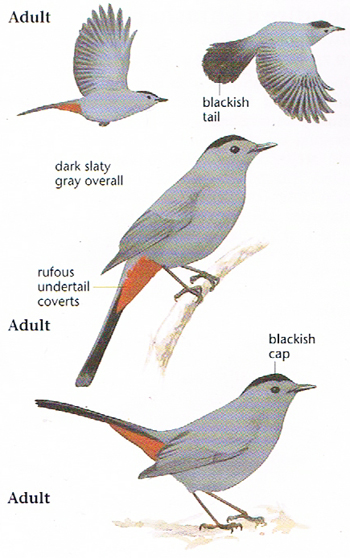
Photo taken from: The Sibley Field Guide by David Allen Sibley
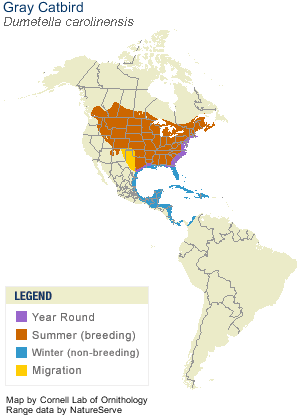
© 2003 Cornell Lab of Ornithology
|
Habitat |
|
Gray Catbirds live amid dense shrubs, vine tangles, and thickets of young trees in both summer and winter. Human disturbance and development often create these habitats in the form of clearings, roadsides, fencerows, abandoned farmland, and residential areas. On tropical wintering grounds catbirds spend more time in forests than they do while in North America. |
|
Behavior |
|
You'll find catbirds hopping through low vegetation or flying short distances at a time, just above the surrounding vegetation. Male catbirds are territorial during spring and summer, singing from prominent perches and chasing away intruders including several other species of birds. Males and females defend their own territories during winter, a time when territoriality is uncommon in many species. In altercations, Gray Catbirds may fluff up the breast and rump feathers, spread their tail, and open their bill toward the sky. Gray Catbirds sometimes destroy eggs and nestlings of woodland species including Eastern Wood-Pewee, Chipping Sparrow, and Song Sparrow. |
|
Food |
|
In summer, Gray Catbirds eat mainly ants, beetles, grasshoppers, midges, caterpillars, and moths. When fruits are available they also eat holly berries, cherries, elderberries, poison ivy, greenbrier, bay, and blackberries. They are sometimes garden pests, eating or damaging raspberries, cherries, grapes, and strawberries. |
Taxonomy
| Kingdom: | Animalia |
| Phylum: | Chordata |
| Subphylum: | Vertebrata |
| Class: | Aves |
| Order: | Passeriformes |
| Family: | Mimidae |
| Genus: | Dumetella |
| Species: | Dumetella carolinensis |
Similar Species |
|
|
Bird Sound |
|
The most common call is a raspy mew that sounds like a cat. Catbirds also make a loud, chattering chek-chek-chek and a quiet quirt. |
|
Eggs look like this |
|
Photo taken from: ARCTOS Collaborative Collection Management Solution |
